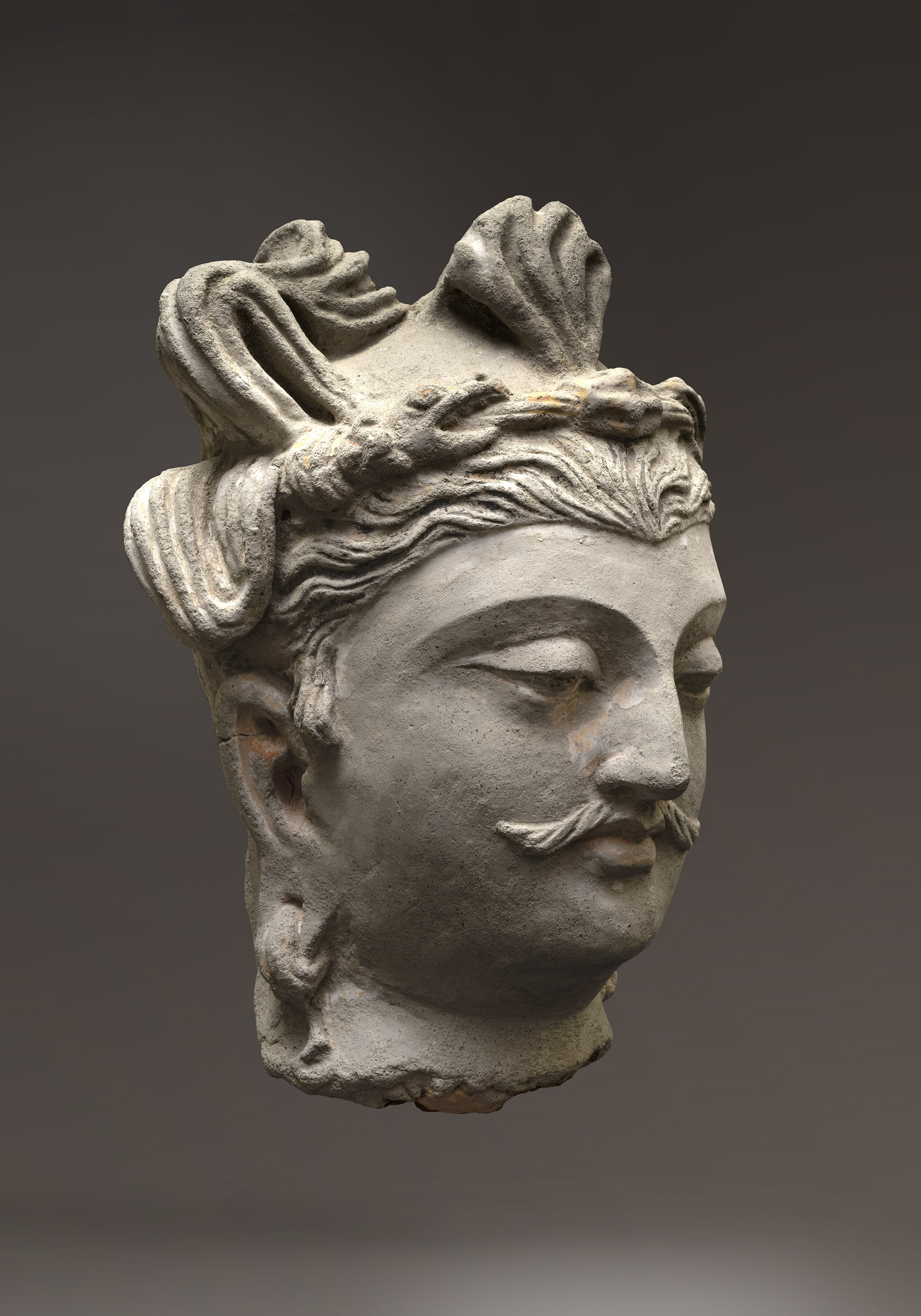
Circa 3rd-5th century
Stucco with traces of polychrome
H25cm
Provenance: Tony Anninos Collection, Brussels and Sausalito, California
This head is modeled in stucco, a mixture of gypsum, sand, lime and water. This head exemplifies the Bodhisattva image, following the current artistic norms and ideals of Afghanistan in the 3rd-4th century. This means basically that the original Hellenistic models were modified, from naturalistic into idealized and spiritualized representations of the Bodhisattva. The eyes are open with pronounced lids, sign of his deep meditation. The elongated eyes with delicately incised lids reveal a gentle, serene gaze. The wide arches of the eyebrows dissolve smoothly into the nose with fine nostrils. The sensuous lips end in deep dimples at the corners of the mouth. A little cavity is positioned between the mouth and the nose. The lips are crowned by a long wavy moustache with curled tips. The rows of waves of the curly hair are held together with a tiara, bejeweled with beads and small heads of Makaras at each side with their mouth exposed. The long earlobes are decorated with refined ear ornaments.
Traces of pigment are still visible on the tiara, the hair, the eyes, the lips and the ears.
During this period Bodhisattvas were represented as princes with the attire of a Central-Asian nobleman. The Kushan rulers were the main patrons of the arts in this area, and it was under their influence that the art of Gandhara underwent an important development. It was a real empire, which included territories from Uzbekistan to North India. This kingdom was at the crossroads of many influences, notably from its Greek neighbours-successors of Alexander the Great-in Central Asia, and then from the Roman empire, which conquered these territories.
Many traits of the classical naturalistic Greek culture were melted with the Central Asian Kushan and also the Northern Indian Gupta/Mathura aesthetic ideas from the start of the 1st century A.D. The aim is to strike the soul of the spectators, to impress them, in a permanent search for the best way to touch the faithful, while humanizing the image of the Bodhisattva.